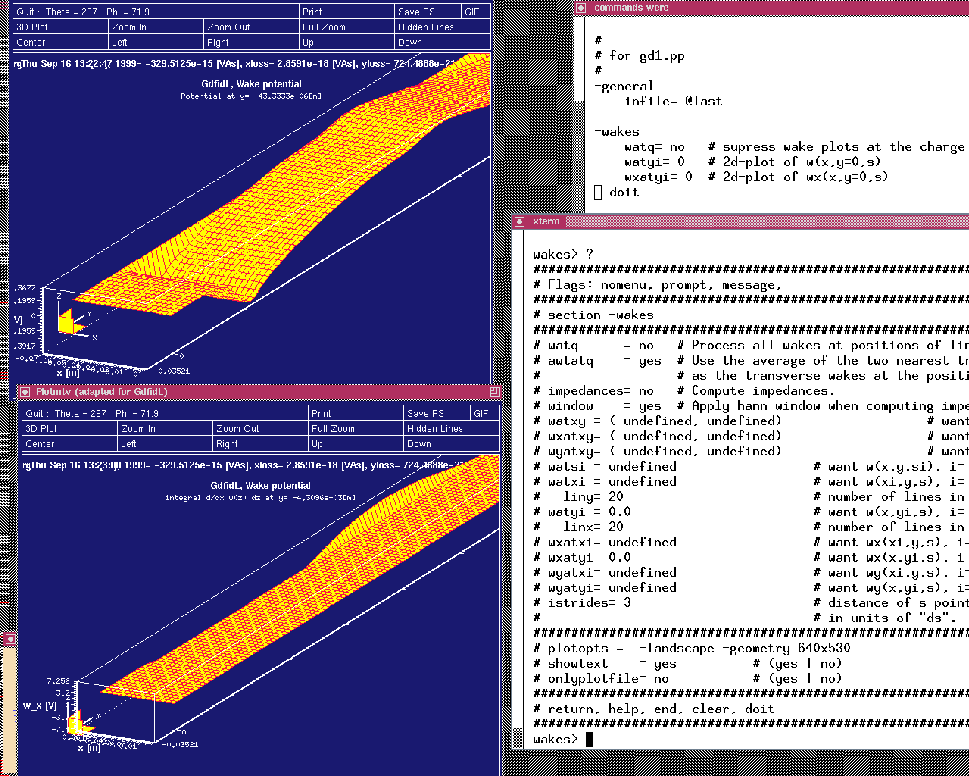Next: Looking at Wakefields
Up: Computing Wakepotentials
Previous: Computing Wakepotentials
We now take the advice and start gd1.pp to look at the results.
We give gd1.pp the following commands:
-general
infile= @last
-wakes
doit
This is: We load the database of the last run, then we enter the section
-wakes and start the computation of the wake-potentials with the default
values.
gd1.pp then computes the wakepotentials from the data that were recorded by
gd1. gd1.pp starts three instances of mymtv2 to show the plots of the
computed longitudinal and transverse wakepotentials.
The resulting screen is shown in figure 4.1.
Figure 4.1:
Screenshot of the desktop when the default values in -wakes are used.
The three instances of mymtv2 show the longitudinal and transverse
wakepotentials at the position of the line charge, ie at the position
(x,y)=(0,0).
The yellow curves show the wakepotentials,
the red curves show the used line-charge density.
The upper left mymtv2 shows the longitudinal wakepotential,
while the lower two mymtv2-windows show the transverse wakepotentials.
 |
Since the structure in reality is rotational symmetric, and the charge
is traveling on the axis, the longitudinal wakepotential should be independent
of the (x,y) position of the test-charge. Also, the transverse wakepotentials
should vanish everywhere.
But since GdfidL is a 3D-code that computes in cartesian coordinates,
the discretised geometry is not exactly rotational symmetric.
This is the reason why the transverse wakepotentials do not vanish exactly.
The computed transverse wakepotentials are 4 orders of magnitude lower
than the computed longitudinal wakepotential, though.
gd1.pp offers the choice to look at the longitudinal or transverse wakepotentials
also as a function of (x,s) at a specified plane y=y0 or as a function
of (y,s) at a specified plane x=x0.
We want to look at
- the longitudinal wake in the plane x=0,
- and the x-wake in the plane x=0
We enter the commands
watxi= 0
wxatxi= 0
doit
The resulting screen is shown in figure 4.2.
Figure 4.2:
Screenshot of the desktop when the plots of wakes in a plane are requested.
The two instances of mymtv2 show the longitudinal and transverse
wakepotentials near the plane y=0.
 |
We see that the longitudinal wakepotential is almost everywhere independent
of the position x, only near the boundary this is not the case.
The transverse potential, being proportional to the transverse gradient
of the longitudinal wakepotential, is therefore almost everywhere 'zero',
as it should be.
Next: Looking at Wakefields
Up: Computing Wakepotentials
Previous: Computing Wakepotentials


